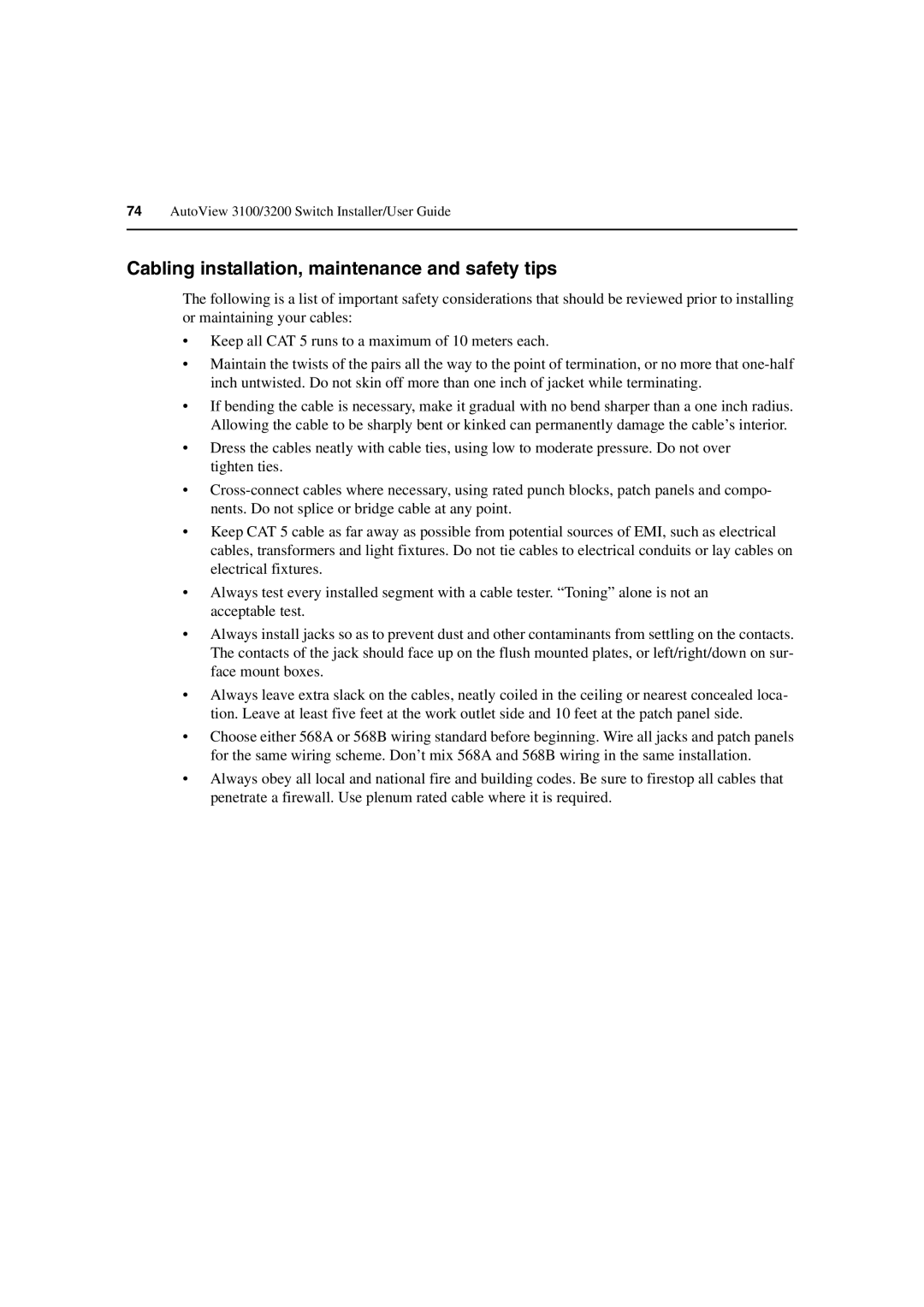74AutoView 3100/3200 Switch Installer/User Guide
Cabling installation, maintenance and safety tips
The following is a list of important safety considerations that should be reviewed prior to installing or maintaining your cables:
•Keep all CAT 5 runs to a maximum of 10 meters each.
•Maintain the twists of the pairs all the way to the point of termination, or no more that
•If bending the cable is necessary, make it gradual with no bend sharper than a one inch radius. Allowing the cable to be sharply bent or kinked can permanently damage the cable’s interior.
•Dress the cables neatly with cable ties, using low to moderate pressure. Do not over tighten ties.
•
•Keep CAT 5 cable as far away as possible from potential sources of EMI, such as electrical cables, transformers and light fixtures. Do not tie cables to electrical conduits or lay cables on electrical fixtures.
•Always test every installed segment with a cable tester. “Toning” alone is not an acceptable test.
•Always install jacks so as to prevent dust and other contaminants from settling on the contacts. The contacts of the jack should face up on the flush mounted plates, or left/right/down on sur- face mount boxes.
•Always leave extra slack on the cables, neatly coiled in the ceiling or nearest concealed loca- tion. Leave at least five feet at the work outlet side and 10 feet at the patch panel side.
•Choose either 568A or 568B wiring standard before beginning. Wire all jacks and patch panels for the same wiring scheme. Don’t mix 568A and 568B wiring in the same installation.
•Always obey all local and national fire and building codes. Be sure to firestop all cables that penetrate a firewall. Use plenum rated cable where it is required.
